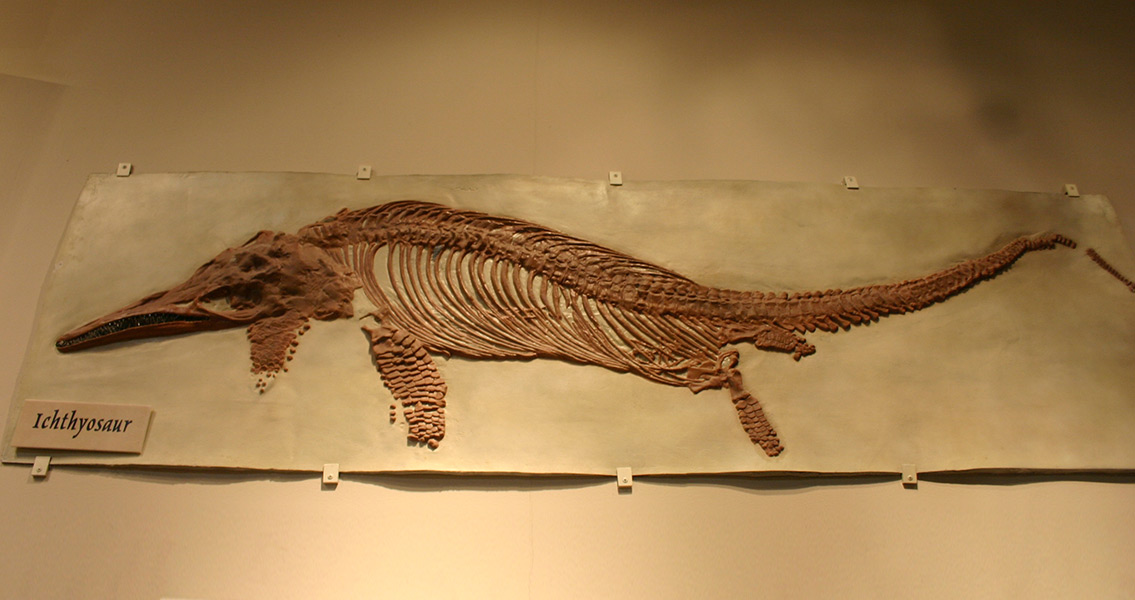<![CDATA[Ancient bones, discovered half a century ago, have revealed a new species. It has long been known that the bones belonged to an ichthyosaur - a marine reptile of the Mesozoic era resembling a dolphin with a long, pointed head and vertical tail - measuring nearly 14 metres in length. Ichthyosaurs were among the top marine predators of their time, feeding on fish and other marine reptiles. New research has revealed that the bones belong to a hitherto unknown species, however. Upon close examination, it was discovered that the bones, from the tail, back and fin, had unique features. Distinct characteristics on the main fin bone suggest that this new species had a different muscular structure to other ichthyosaurs, possibly making it a stronger swimmer than its cousins. The fossilised bones were originally found at Bearreraig Bay on the Isle of Skye in 1959, but have only recently been properly analysed by researchers. They were discovered by a local fossil enthusiast, Brian Shawcross, who donated them to the Hunterian Museum, Glasgow. Only recently have palaeontologists realised the significance of Shawcross' discovery. The reptile dates from the middle Jurassic period, about 170 million years ago; a time which little is known about and from which few fossils have been found. "Skye is really important globally because the fossils there are from the middle part of the Jurassic period, about 160 to 180 million years ago, and that is one of the worst-known intervals for reptiles and dinosaurs of their entire history," Steve Brusatte, a palaeontologist at the University of Edinburgh, told The International Business Times. During the Jurassic period Skye was partly submerged and had many lagoons. Describing the fossil, Brusatte told The Guardian, “It’s not the prettiest specimen in the world. You can hold all of the bones in one hand. But it’s the first time we've recognised a distinctly Scottish prehistoric marine reptile". Despite the remains being so scant, Brusatte said that it was clear the bones had distinct features on the upper fin; suggesting the Scottish species was new to science. On one end of the bone, there was a large, triangular projection where muscle would have attached. On the same bone, a deep pit, probably attached to ligaments, was also unique. "These two distinct features are very strong evidence that it’s a new species,” said Brusatte. “They have something to do with musculature. Maybe they made it swim faster." In an expression of gratitude to Shawcross - and to hopefully encourage more private collectors to donate their fossils to science - the researchers have named the new species after him. The animal is officially called Dearchmhara (pronounced “jark vara”) shawcrossi. Researchers are now surveying all fossils found on Skye, in the hope of discovering more about this new marine predator. Private collectors are also being called upon to share their specimens, rather than sell them to other private collectors. “What people find may be really important and it would be great if there was a way to preserve them for posterity. They are part of Scotland’s heritage,” Brusatte said. ]]>
Ancient Marine Predator Discovered in Scotland
